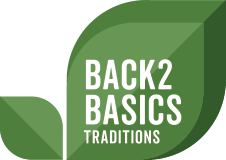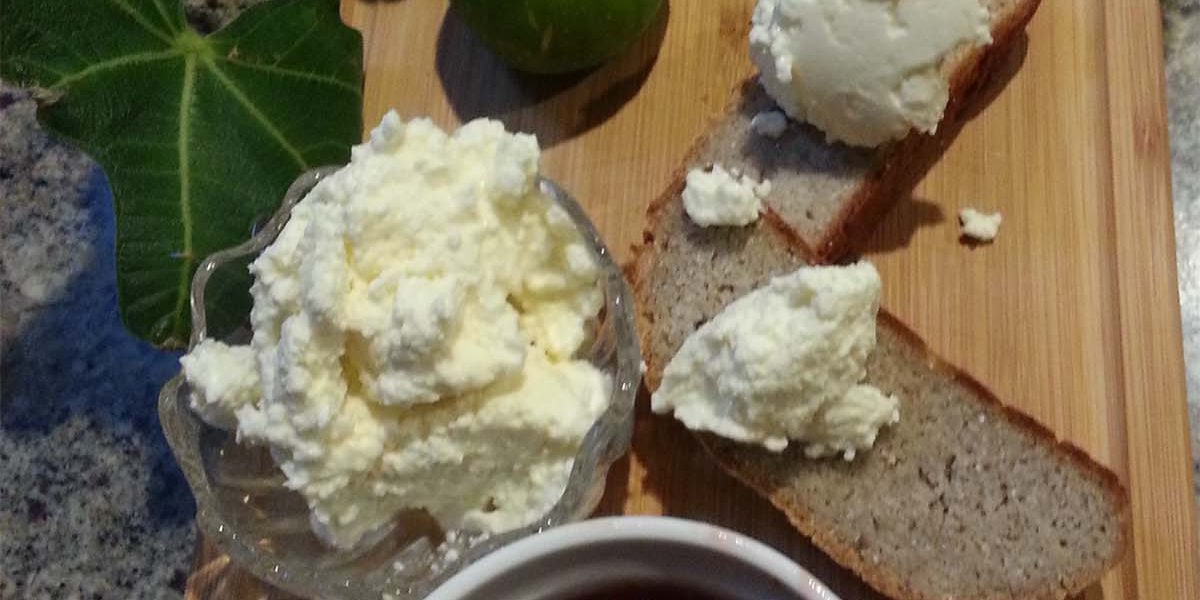It wasn’t too long ago that Ricotta was an obscure and relatively unknown culinary delight in Australia. It was seldom stocked on supermarket shelves and could only be found in small local continental stores or the kitchens of Italian immigrants.
Today it is common in all major supermarket chains and sold under different marketing descriptions including smooth, original and traditional. Most of the Ricotta in stores is Ricotta Fresca (or fresh Ricotta) with wonderful Ricotta made by local South Australian producers including La Casa Di Formaggio, La Vera, Alexandrina and Island Pure.
Ricotta means “twice cooked” or “to cook again”, as traditionally it is made with the whey by-product that remains once curds have been removed from making another cheese. This left-over whey is acidified (by fermentation, addition of vinegar, lemon juice or the use of a fig branch – more on that below) and then recooked.

According to the book ‘Cheese and Culture: A History of Cheese and Its Place in Western Civilization’, Ricotta production in Italy dates back to the Bronze age and the Etruscan civilisation where ceramic vessels (referred to as Milk Boilers) were used to boil milk.
Local historian Alessandro told us that back in Italy they sometimes made Ricotta by placing sheep milk in the stomach of a freshly killed goat and leaving to hang until curds formed. Inspired to investigate this further we found that Jenny Lewis in her book ‘Midwest Sweet Baking History’ recalls stories of cheese being made accidentally by early goat herders through the storing of goat milk in the goat’s stomach. The natural rennet in the goat stomach turned the milk into cheese!
Interestingly, this is therefore a “Ricotta Cheese”, whereas Ricotta made traditionally using the leftover whey is not a cheese at all. So why is most commercial Ricotta referred to as Ricotta Cheese? This is because commercial Ricotta is from the first curd of whole or part skim milk which is added to the whey and not solely from the leftover whey.
Types of Ricotta
Ricotta Fresca
Ricotta Fresca (Fresh Ricotta) is the most common type of Ricotta and like all types of Ricotta traditionally came from sheep, goat or buffalo milk. The EU has regulations in place protecting two types of Italian Ricotta – Ricotta di Bufala Campana, which is made from the whey by-product of Mozzarella di Bufala Campana (buffalo mozzarella) and Ricotta Romana which is made from the whey from sheep milk cheese. Cow milk is typically used to make Ricotta in Australia, however Island Pure does produce a sheep milk Ricotta.
Ricotta Fresca serves as the basis for some amazing desserts including Neapolitan Pastiera (a famous Easter cake from Naples), Sicilian Cannoli and Palermo’s Cassata. However, we simply love it mixed with a drizzle of Vino Cotto and served on some baked figs. If you are looking for a fantastic dinner option, then you can’t go past Ricotta and Spinach Cannoli!
Ricotta Salata
Ricotta Salata (Salted Ricotta) is a goat milk ricotta originally from Sicily. It is made from curds that have been salted, pressed, dried and then aged for up to 3 months. When fresh it can be sold in a brine or milk solution. It is firmer, saltier and has a more intense flavour than Ricotta Fresca. It is fantastic crumbled in salads.
Ricotta Forte
Ricotta Forte (Strong/Pungent Ricotta) is also known as Ricotta Scant, Ascuant or Squanta and is an authentic Pugliese pungent “cheese” made from leftover sheep, goat or cow milk ricotta. The leftover Ricotta is left to ferment in clay pots for 3 days after which it is kneaded every few days until it has a soft paste consistency. From here it is left to mature for around a month in a cool humid environment and then salted and left to mature for up to several months. The result is a strong, tart and slightly tangy flavoured ricotta that is common in pasta dishes of Puglia and Salento.
Ricotta Infornata
Ricotta Infornata or Ricotta al Forno (Baked Ricotta) is a Ricotta made by baking a ball of drained Ricotta Fresca in an oven until brown and a light crust has developed. It is particularly popular in Sardinia and Sicily where it is used to make ricotta al forno al limone (baked ricotta lemon cake).
Ricotta Affumicata
Ricotta Affumicata (Smoked Ricotta) is believed to have originated in the Northern regions of Italy where smoke from fireplaces used for heating “smoked” ricotta left near fireplaces. Culinary it is smoked until a grey crust develops and the scent of the wood (traditionally oak or chestnut) has been imparted into the ricotta. It is superb grated over gnocchi or tortellini with melted butter.
How You Can Make Homemade Ricotta – with a Fig Branch!
Making Ricotta Cheese at home is very simple and easy. It requires nothing more than some milk, a rennet of some type (e.g. vinegar, junket tablet or fig branch) and a cheesecloth.
Some years back our Nonna taught us how to make Ricotta Cheese using nothing more than the lactate from a fig branch as the rennet to create curds. We remember how delicious it tasted, but our first attempts at replicating our Nonna’s creation lacked the deliciousness we had grown to love. It was good, and we happily (or greedily) devoured it – but we pondered endlessly wondering what we were doing different. Just like a light bulb turning on we had the answer! The milk Nonna used was fresh and full of cream – the top quarter was a thick cream. And there was our answer, we simply needed to add some thick jersey milk cream to the create the same delicious Ricotta like Nonna used to make!
Follow these steps to create a rich and delicious Ricotta at home.
Ingredients
- 800ml – Fresh Full Cream Milk
- 200ml – Thick Cream (we absolutely love Jersey Fresh cream from the Barossa Valley)
- 5 teaspoons (~25-30ml) of white lactate from Fig cutting (strip cutting to obtain lactate)
- 1 young Fig branch (washed and leaves removed) to stir **
- 2 teaspoon of salt
- Thermometer (optional)
** Note you can simply cut incisions into the fig branch and have the lactate weep out while stirring – select a fig branch with small figs (see photo below for comparison)
Instructions
1. Mix the fig lactate in a ¼ cup of warm water


2. Mix the milk, cream and salt together and pour into a saucepan
3. Over a medium heat, bring the milk to a boil. If you are using a thermometer bring to 90 degrees – do not go above 100 degrees as this can burn the milk. Stir constantly.

4. Remove from heat and pour in the lactate and stir gently until curds start to appear. If curds do not appear, return to heat and bring back to boil.

5. Let sit for 10-15 minutes.
6. Line a colander with the cheese cloth and place over a deep bowl.
7. Pour the curds and whey into the cheese cloth.

8. Place in fridge and allow to drain for 1 to 2 hours until reaches desired consistency. The longer it is left to drain the firmer the Ricotta will become.
9. Dig in. The Ricotta is ready for you to enjoy. Place in an air tight container in the fridge if saving for later use. (The whey liquid can be discarded).

Homemade Ricotta is simple, easy and absolutely delicious.
What are some of your favourite ways to use Ricotta? Cannoli? Cassata? Pizza?
Make sure to let everyone know in the comments below.
Please remember to sign up to our ‘Be A Cook, Not A Chef’ newsletter to receive our latest recipes, tours and cooking experience details, product updates and member only specials. Simply use the sign-up form below the comments section.
Informative Links
- Ricotta di Bufala Campana – http://www.agricoltura.regione.campania.it/Tipici/ricotta-bufala.html
- Cheese and Culture: A History of Cheese and Its Place in Western Civilization – https://www.amazon.com/Cheese-Culture-History-Western-Civilization/dp/1603585060
- Midwest Sweet Baking History – https://www.amazon.com/Midwest-Sweet-Baking-History-Delectable/dp/1609493443
- Island Pure – http://islandpure.com.au/shop.aspx?target=Ricotta
- Alexandrina Cheese – http://www.alexandrinacheese.com.au/products.html
- La Casa Del Formaggio – http://lacasa.com.au/products/traditional-ricotta/
- La Vera – https://www.ichoosesa.com.au/business-directory/la-vera-the-genuine-art-of-cheese-making









First time trying to make cheese. Found article very useful. Just waiting for curds to set????
Jennifer the curds will start to set quickly once lactate is added and you start to stir with the fig branch. Not all the milk will turn into curds.